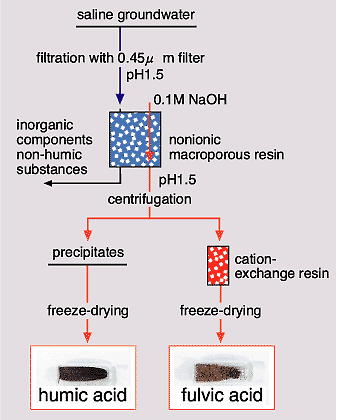The understanding of radionuclide migration behavior is very important for the assessment of nuclear waste disposal in geological formations. It is necessary to study the dissolved forms of radionuclides in groundwater and then evaluate the mobility of the radionuclides. The role of natural organic materials has often not been explicitly addressed in recent performance assessments, but it is an important point because of the enhancement of the mobility of radionuclides due to complexation. The impact on actinides such as Pu is large because of the long-half life, the toxicity and its strong affinity for organic materials. In order to understand the association of actinides with organic materials, we focused on humic substances - amorphous, polyelectrolytic organic acids. These substances occupy the majority of organic materials in groundwater and have a high complexation ability for actinides. The complexation properties of actinides with humic substances isolated from a large volume of groundwater (Fig. 11-13) were studied on the basis of molecular size distribution.
The percentage of Pu and Am dissolved in the artificial saline groundwater increases in the presence of humic substances due to the complexation of Pu and Am (Fig. 11-14). Size distribution of Pu-humic complex substances is different from that of Am. Therefore, migration of radionuclides in underground layers is affected by type of humic substances in the groundwater. Until now, reports on complexation experiments using humic substances isolated from groundwater are not numerous, and characterization of the actinides-humus complexes on the basis of molecular size distribution, related to the mobility of complexes in aquatic environ-ments, is limited. Therefore, more realistic prediction and evaluation on the dissolved forms of radionuclides and their mobility in underground environments are anticipated
on the basis of these results. |

